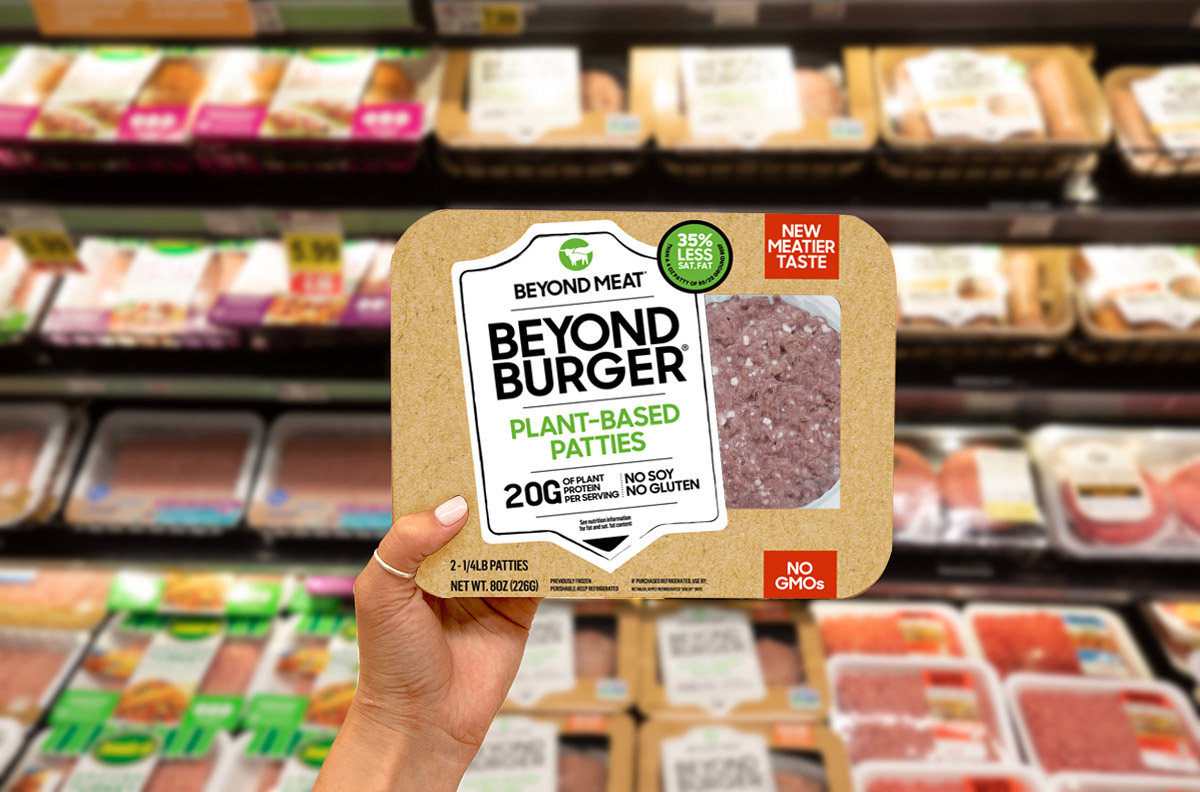Seemingly everything has gone right for Beyond Meat (BYND 2.33%) since its market debut earlier this year. The stock has improbably soared by triple digits and landed the business a market cap of more than $10 billion. On the one hand, that's a heck of a premium for current operations. On the other hand, second-quarter 2019 results show that the company is growing at an incredible clip and might even be capable of doing so profitably.
Investors looking to play the animal-free protein revolution might feel stuck between that hefty premium and eye-popping growth. Will Beyond Meat make the most of its first-mover advantage or will it ultimately fumble away the opportunity to newcomers? How long can the incredible pace of growth keep up? To try to determine reasonable, nuanced answers to these questions and more, let's look at where Beyond Meat could end up five years from now.

Image source: Getty Images.
A solid start as a public company
Beyond Meat delivered solid Q2 2019 operating results that included its first-ever quarter with profitable operations and an increase in full-year 2019 guidance. Management previously expected the business to achieve at least $210 million in annual revenue, but now expects at least $240 million in sales this year.
The main driver for the company's epic growth: restaurants. National food chains can't get enough of Beyond Meat's products. Restaurant and food-service segment revenue soared to $33 million in Q2, up from $20.6 million in Q1 and just $5.7 million in the year-ago period. That segment represented 50% of total revenue in the first half of 2019 (with retail sales representing the remainder), compared with just 30% in the first half of 2018. It's also helping the business to diversify revenue across more retail and restaurant customers, as evidenced by the fact that the top customer accounted for a much lower percentage of total revenue in the most recent period.
|
Metric |
First Half 2019 |
First Half 2018 |
Change |
|---|---|---|---|
|
Retail revenue |
$53.7 million |
$20.9 million |
156% |
|
Restaurant and food-service revenue |
$53.7 million |
$9.2 million |
486% |
|
Total revenue |
$107.5 million |
$30.1 million |
256% |
|
Gross profit |
$33.5 million |
$4.7 million |
618% |
|
Operating expenses |
$36.6 million |
$17.5 million |
109% |
|
Operating income (loss) |
($3.1 million) |
($12.8 million) |
N/A |
|
Cash flow from operations |
($22.3 million) |
($12.7 million) |
N/A |
|
Top customer percentage of total revenue |
22% |
37% |
N/A |
Data source: SEC filing.
The excitement over triple-digit growth was partly offset by the simultaneous announcement of a stock offering. Existing shareholders decided to unload 3 million shares of common stock at $160 a share, although Beyond Meat won't receive any proceeds from the transactions. The company will receive approximately $40 million in gross proceeds from offering an additional 250,000 shares in the offering. That will more than offset cash outflows from operations in the first half of the year and pad a balance sheet that exited June with $277 million in cash.
That war chest provides a significant advantage for Beyond Meat, especially given the relative strength of operations as measured by its manageable operating losses and cash outflows. Will management put it to good use?

Image source: Getty Images.
Looking ahead
Not much time has elapsed, but so far, Beyond Meat appears to have sidestepped the trappings of success and made intelligent investments against its long-term strategy.
For example, the business inked a deal with Zandbergen World's Finest Meat to build a new factory in the Netherlands. Zandbergen wields considerable distribution heft, and the factory will be Beyond Meat's first in Europe, which will reduce logistical hurdles in supplying fresh products to the Continent. That's good, considering frozen products made up just 9% of gross revenue in the first half of 2019.
The facility will also be advantageously close to some of the world's most abundant and lowest-cost sources of pea protein (the main protein source in Beyond products) and sugar beets (beetroot juice is used to make Beyond products "bleed"). That could allow Beyond Meat to build long-term relationships in agricultural markets that will come in handy down the road.
Here are more areas that will require proper navigation to maximize success in the next five years.
New products: Beyond Meat has launched a new, meatier Beyond Burger and made its Beyond Beef available to retail channels in recent months. The rollout was likely a preemptive strike against Impossible Foods, which just received the green light to sell its animal-free protein products on supermarket shelves. But continuous innovation will be required to keep Beyond Meat at or near the top of the pack.
Competition: The global protein market is so large -- measured in trillions of dollars -- that it can adequately handle many dozens of animal-free protein developers. Rather than call it "competition," perhaps the best way to think about it is that the market opportunity will be diluted. No matter what you call it, there's an avalanche of start-ups coming in the animal-free protein space, and investors will likely feel it.
The most tangible effect is likely to come in the form of eroded pricing power. Right now, national chains can basically choose between Impossible Foods and Beyond Meat, but what happens when there are as many as two dozen options? That would result in lower margins, but there's one way Beyond Meat can combat it: scale.
Scale, scale, scale: Many words have been written about all the animal-free protein developers out there, but many fewer have been written about the hurdles of scaling up. Beyond Meat faces a relatively easy obstacle here, as its manufacturing process leans on abundant agricultural commodities. As demand for its products grows, it will earn more power within agricultural supply chains, which can be used to lower cost of products sold and offset eroding margins.
Peers that rely on industrial biotech will need to scale up fermentation processes, which poses a significantly more difficult challenge that few companies have met at the scale required in food markets. Simply put, many of the Beyond Meat challengers getting hyped today won't survive through commercial operations.
A bright future
Is Beyond Meat worth its current market cap of $10 billion? Not based on current operations. But if the business proves that its Q2 operating profit wasn't a fluke, then it would certainly make the stock less risky as operations grow into their premium valuation. Given the giant market opportunity, investors might not be surprised to see the business deliver $1 billion in annual sales by 2024.
That said, customers are about to have many animal-free protein options, and Wall Street might not hesitate to punish the stock at the first sign of trouble. Investors who buy now have to understand the potential long-term pitfalls an of owning this overvalued stock.






